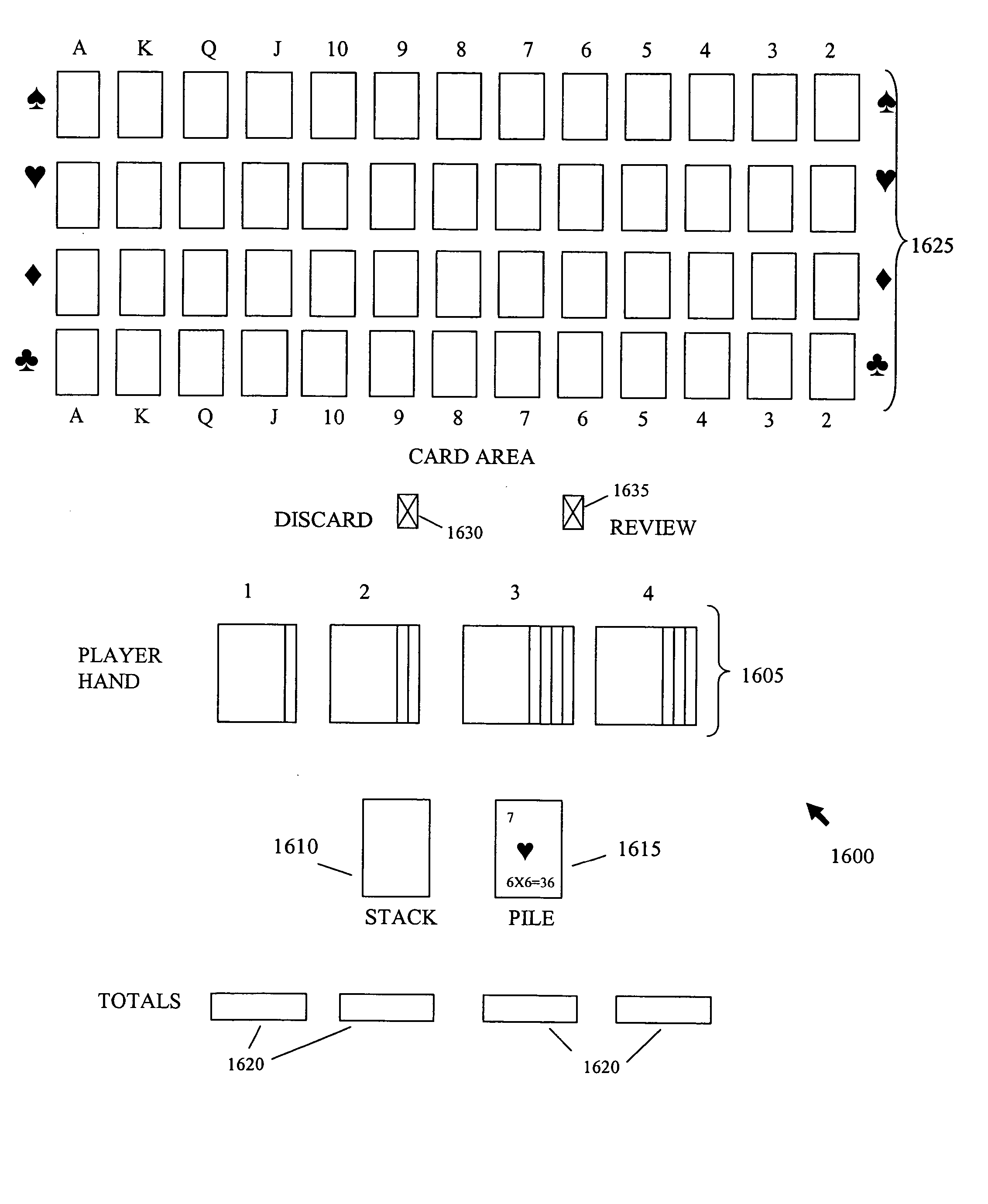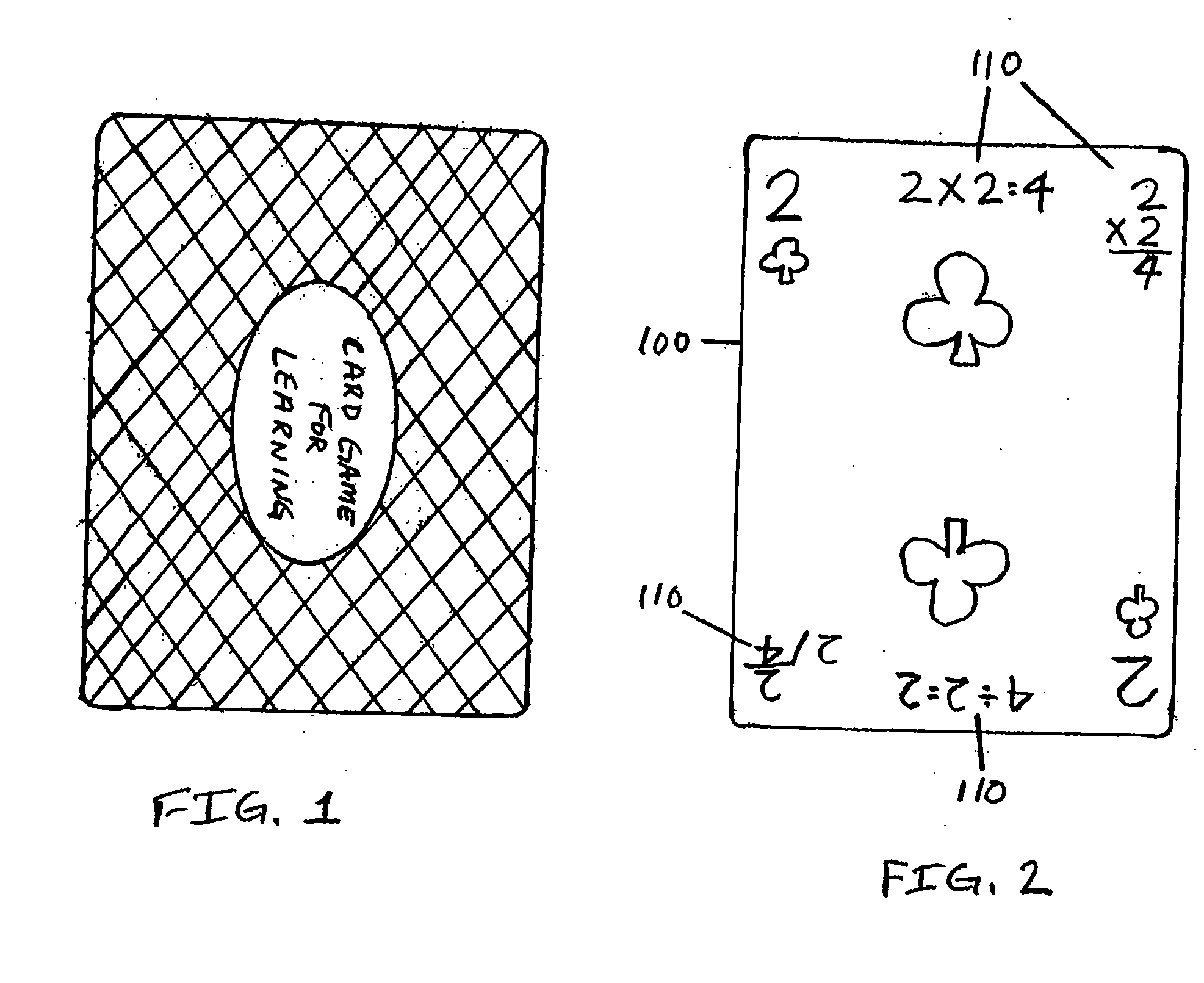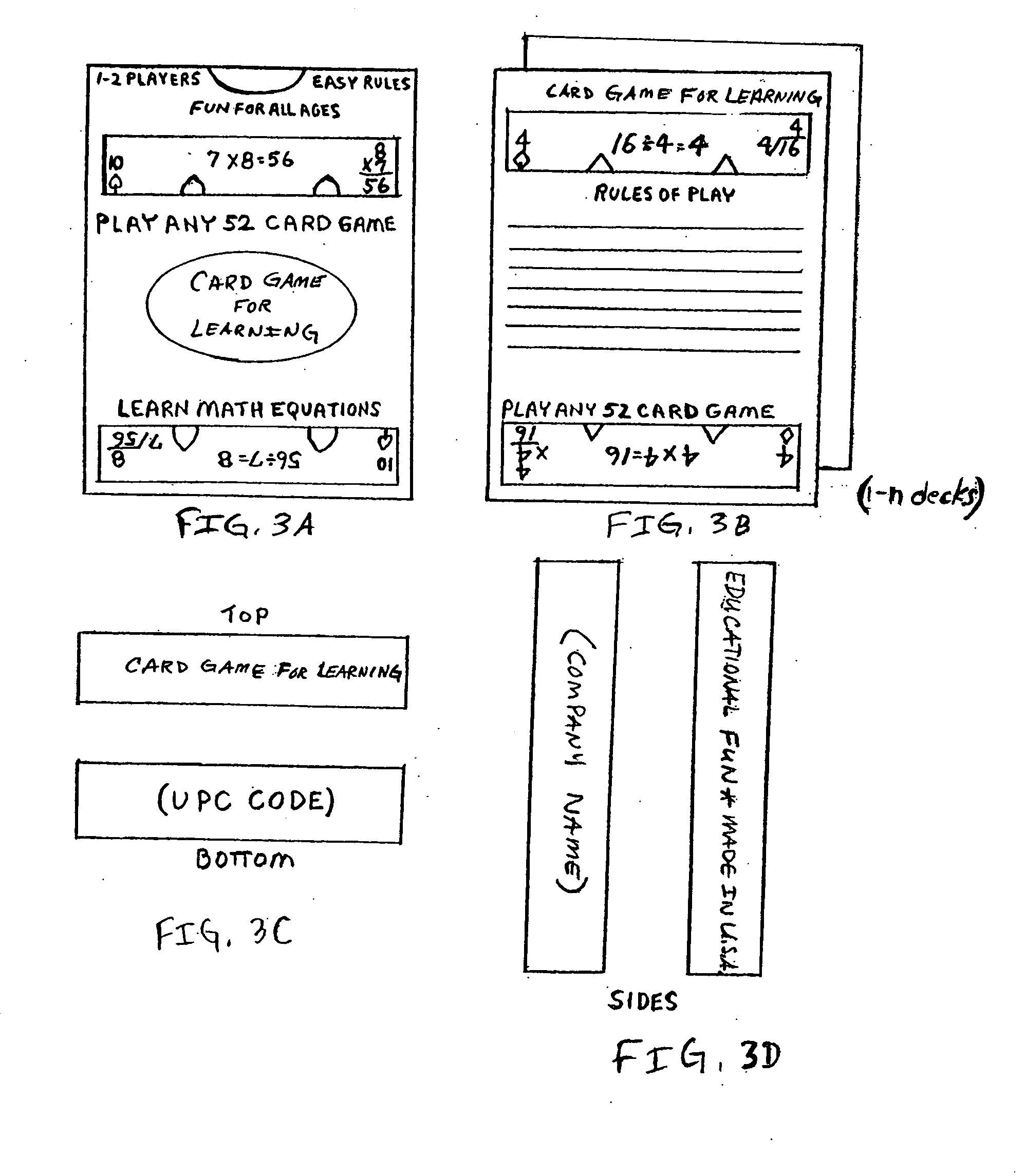Card game for learning
a card game and learning technology, applied in the field of card games, can solve the problems of high cost of books and high cost of computer based tools, and achieve the effect of low cos
- Summary
- Abstract
- Description
- Claims
- Application Information
AI Technical Summary
Benefits of technology
Problems solved by technology
Method used
Image
Examples
Embodiment Construction
[0045] The present invention is a card playing game of fifty-two cards of four suits. FIG. 1 is an illustration of one side of one of the fifty two cards and shows an exemplary name of a game. On the other side of the cards are the suits of clubs, diamonds, hearts and spades. FIG. 2 shows an example of clubs 100. Each suit has thirteen ranks with face values of 2, 3, 4, 5, 6, 7, 8, 9, 10, Jack, Queen, King, and Ace.
[0046]FIGS. 3A, 3B, 3C, and 3D show representative examples of the six sides of a card deck box suitable for packaging the present invention.
[0047] A particular deck is typically targeted to a particular subject area such as math, language, geography, science, literature, history or mythology, however mixing subjects is feasible. Any subject area can be scaled to age brackets and a unique deck created for that bracket and given subject area. For example (the following are examples of a very wide range of possible information facts, which should not be a limiting factor ...
PUM
 Login to View More
Login to View More Abstract
Description
Claims
Application Information
 Login to View More
Login to View More - R&D
- Intellectual Property
- Life Sciences
- Materials
- Tech Scout
- Unparalleled Data Quality
- Higher Quality Content
- 60% Fewer Hallucinations
Browse by: Latest US Patents, China's latest patents, Technical Efficacy Thesaurus, Application Domain, Technology Topic, Popular Technical Reports.
© 2025 PatSnap. All rights reserved.Legal|Privacy policy|Modern Slavery Act Transparency Statement|Sitemap|About US| Contact US: help@patsnap.com



